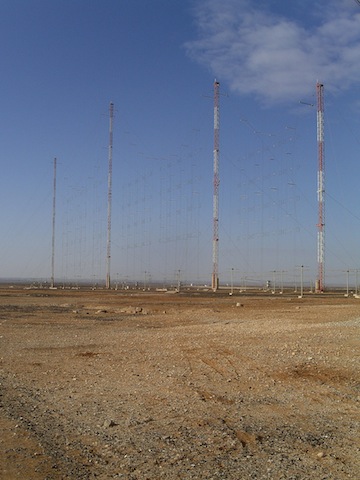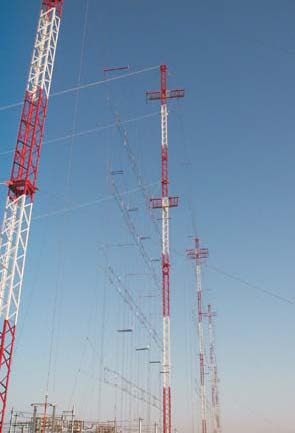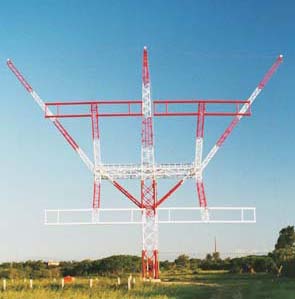| GENERAL DESCRIPTION |
 When sectional coverage is desired, directional antennas are the proper choice. Curtain antennas provide not only high antenna efficiency, but also highest tolerances when faced with unfavorable environmental conditions.
When sectional coverage is desired, directional antennas are the proper choice. Curtain antennas provide not only high antenna efficiency, but also highest tolerances when faced with unfavorable environmental conditions. Fixed curtains consist of half-wave, folded, open and multiple wire cage dipoles. The dipole feeding system is based on broadband design, which means dipoles are switched in parallel to subgroups. These subgroups are switched in parallel to subsystems, until the common feed point (input of the slewing switch) is reached.
Fixed curtains consist of half-wave, folded, open and multiple wire cage dipoles. The dipole feeding system is based on broadband design, which means dipoles are switched in parallel to subgroups. These subgroups are switched in parallel to subsystems, until the common feed point (input of the slewing switch) is reached. The Rigid Dipole Technology combines design principles as implemented in rotatable shortwave antennas with the advantages of curtain antennas. The resulting integrated system consists of rigid dipoles and a self supporting structure with central shaft.
The Rigid Dipole Technology combines design principles as implemented in rotatable shortwave antennas with the advantages of curtain antennas. The resulting integrated system consists of rigid dipoles and a self supporting structure with central shaft.| TECHNICAL SPECIFICATIONS | |||||||
| Antenna Type | Range (in km) | Frequency Range | Radiation Pattern | Typical Gain (dBi) | |||
| Up to 1300 | 1000 to 4000 | 2000 to 6000 | 3000 to 8000 | ||||
| AHR(S) 2/2/h (Fixed Curtain) |
X | up to six adjacent frequency bands | directional | 14 - 16 | |||
| AHR(S) 4/2/h (Fixed Curtain) |
X | up to six adjacent frequency bands | directional | 15 - 21 | |||
| AHR(S) 4/4/h (Fixed Curtain) |
X | up to six adjacent frequency bands | directional | 18 - 24 | |||
| The height (h) is according specific performance requirements. The stated range is assuming single-hop transmission and can be seen as a rough guideline for design purposes. In any case the range is dependent on specific ionospheric propagation conditions. |
|||||||
| Specifications may change without notice | |||||||